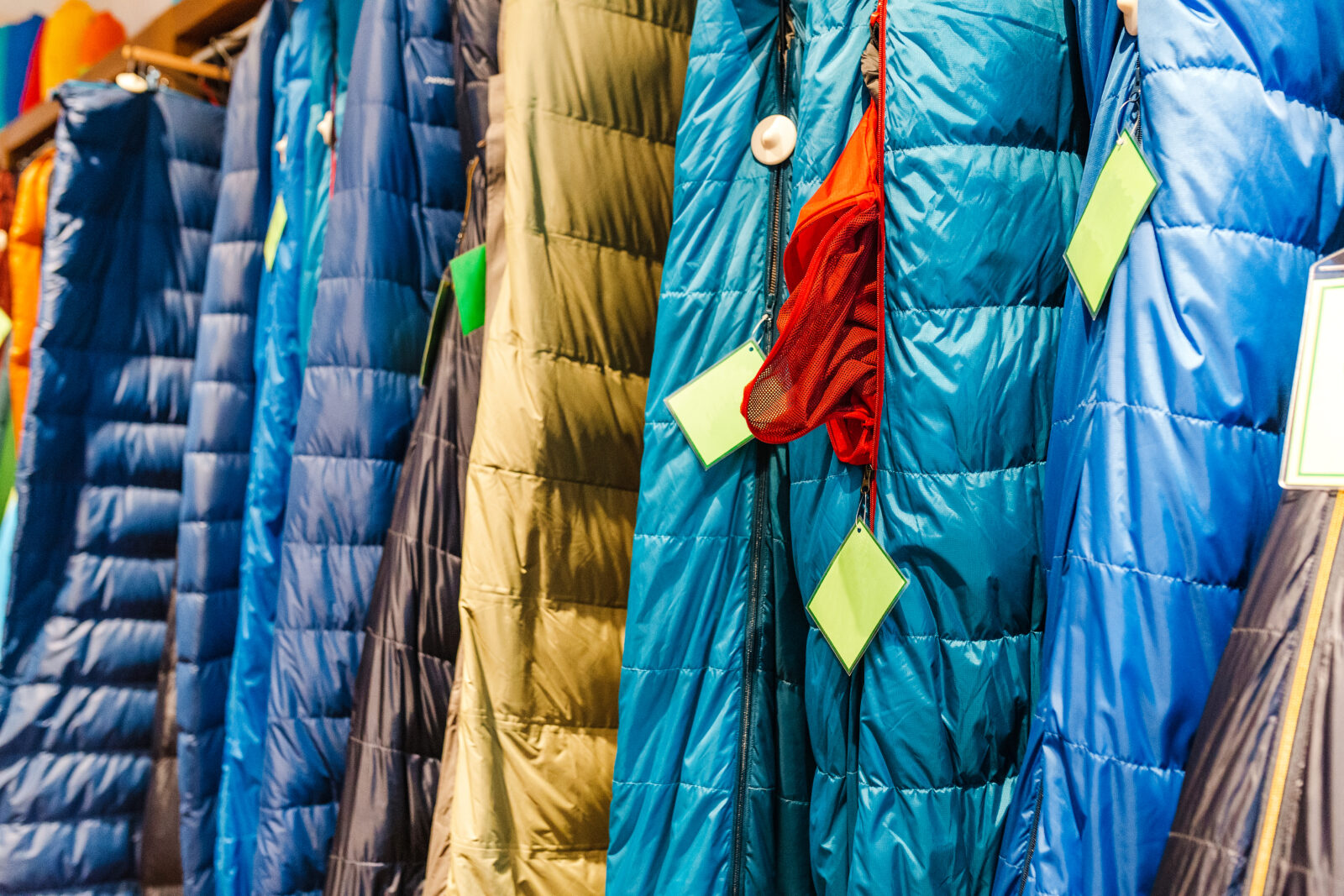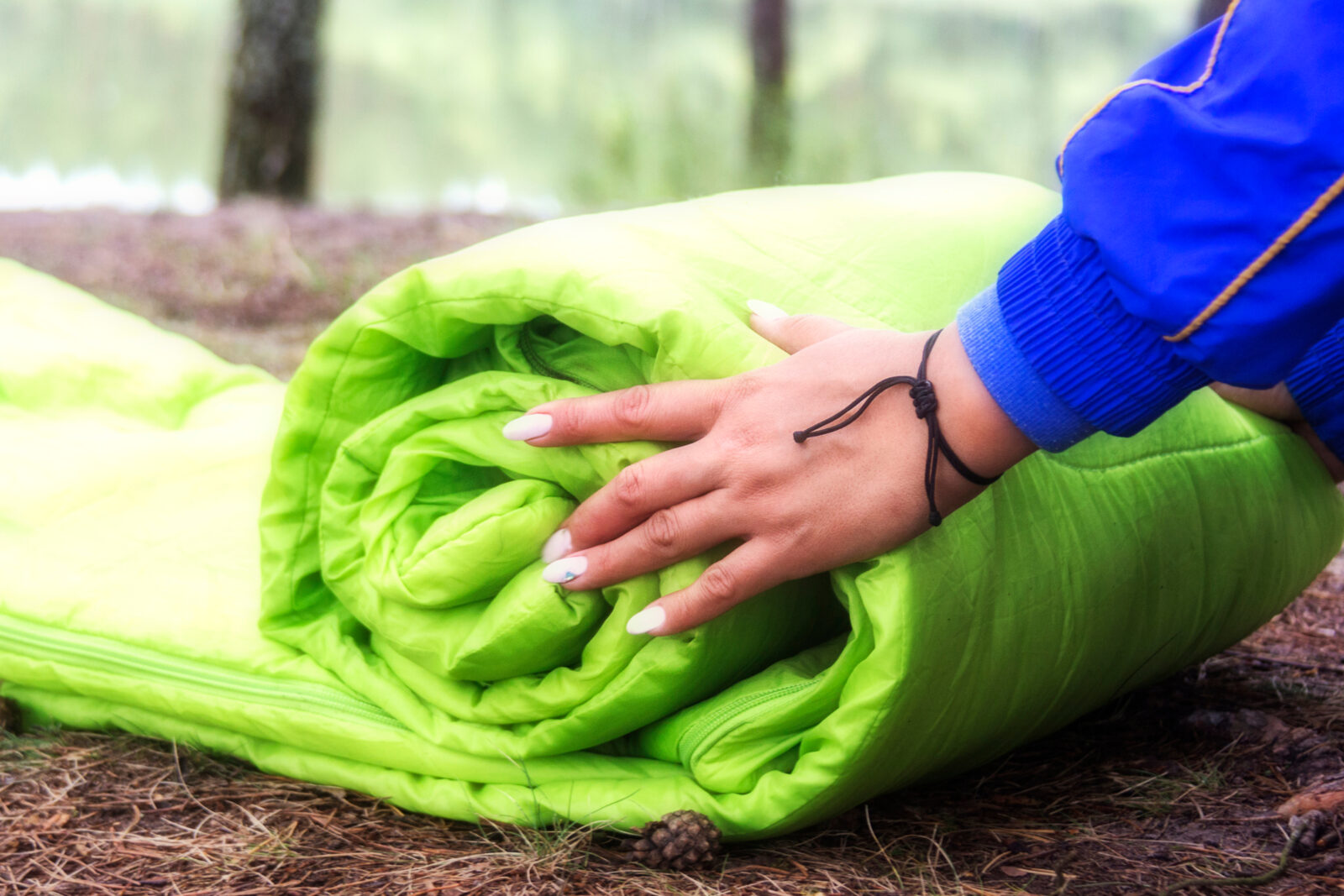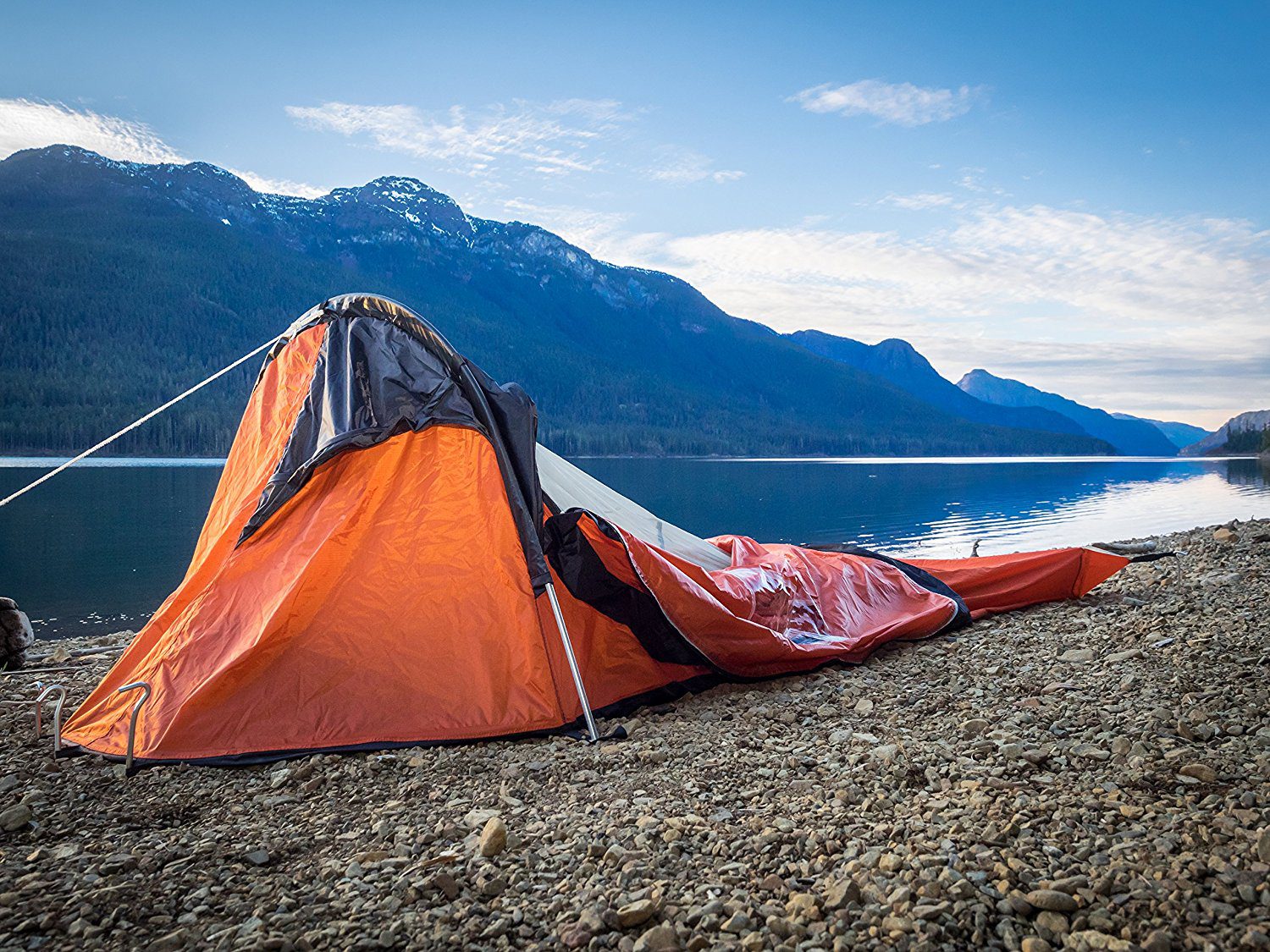Are you looking for a sleeping pad so that nights under the stars are more comfortable?
You have come to the right place and we have got you covered.
Recreating your own bed’s comfort can be the key to a decent night’s rest to prepare you for the next day’s activities. If most sleeping pads appear to do the same thing, how do you pick one going to take your backcountry sleep patterns to the next level?
Here are some aspects to consider :
- Types of sleeping pads. There are air, self-inflatable, and foam options.
- Usage type. Are you a backpacker, thru-hiker, or car camper?
- R-value. This is the rating that measures a sleeping pad’s comfort compared to the ground temperature.
Read More : 6 Things to Know Before Buying Sleeping Pads for Camping
Read through our picks and buyer’s guide to figure out which sleeping pad is the best choice for you.
Our top sleeping pads for camping picks
| Sleeping Pad Model | R-Value | Weight |
|---|---|---|
| REI Co-op Trailbreak | 5.1 | 2.5lbs / 1.1kg |
| Nemo Switchback | 2 | 14.5oz / 411g |
| Therm-a-Rest NeoAir Topo Luxe | 3.7 | 1.4lbs / 652g |
| NEMO Tensor | 3.5 | 15.0oz / 425g |
| Big Agnes Q-Core SLX | 3.2 | 1.4lbs / 624g |
| Exped DownMat XP 9 | 7.8 | 1.9lbs / 884g |
| Exped MegaMat Duo 10 | 8.1 | 9.9lbs / 4.1kg |
| Hest Sleep System | 11.8 | 26.0lbs / 11.8kg |
REI Co-op Trailbreak
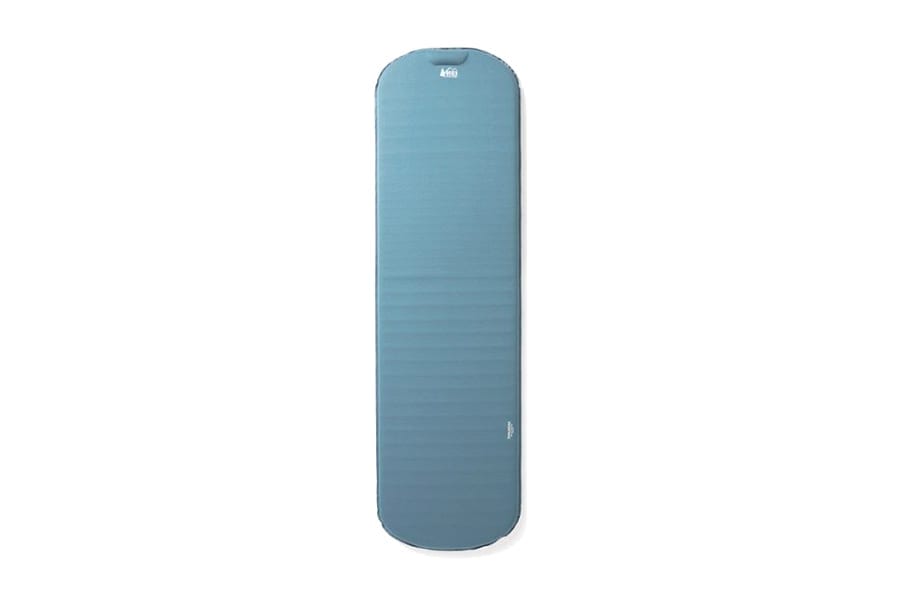
- R-Value : 5.1
- Type : Self-inflating
- Weight : 2.5lbs / 1.1kg
The REI Co-op Trailbreak sleeping pad is relatively lightweight and highly rated in the convenience and comfort department. It self-inflates for a quick setup and rolls down into an accompanying stuff sack with compression straps.
This sleeping pad is created with body-mapped coring and uses open-cell foam for insulation. It keeps the sleeping pad compressible and light while maximizing insulation and the comfort level. Color-coded valves make for easy inflation and deflation.
A stretchy, plush top surface is also slip-resistant for increased comfort. Durable polyester makes up the bottom to provide greater longevity against hard surfaces. With an R-value of 5.1, the REI Co-op Trailbreak is one of the must-haves for a cold-weather camping trip.
What we like
- Stuff sack and straps for a quick and compressed pack.
- Open-cell foam for increased insulation.
- Polyester bottom increases durability.
What we don't like
- Heavier weight makes it difficult for some long-term backpackers.
NEMO Equipment Switchback
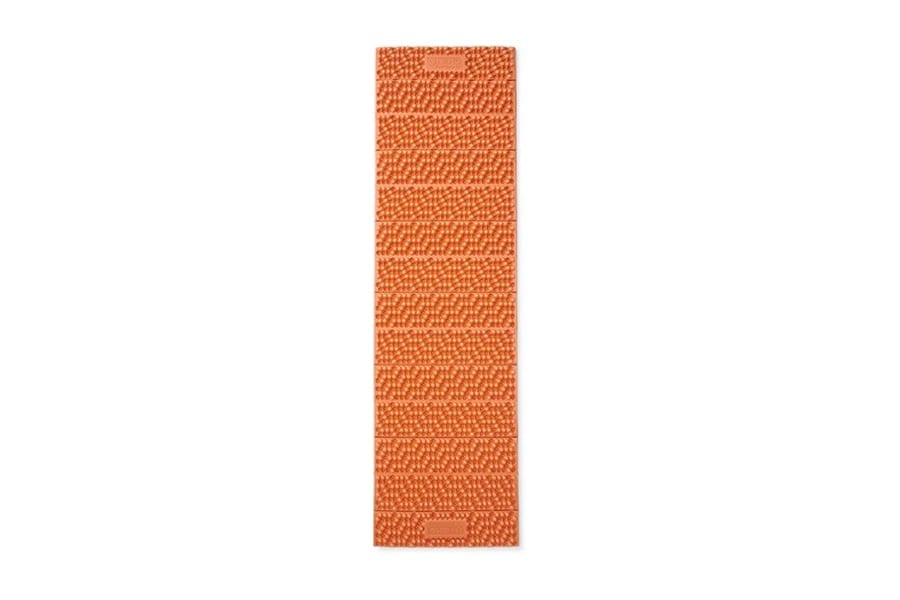
- R-Value : 2
- Type : Closed-cell foam pad
- Weight : 14.5oz / 411g
The NEMO Switchback sleeping pad weighs under a pound, making it light enough for backpacking. It uses a space-efficient design that allows for 20% more thickness while fitting into a folded package that is smaller than the industry standard. A regular sleeping pad packs down to 20” x 5.5” x 5”.
NEMO Equipment uses a hexagonal nesting pattern, which makes it feel incredibly plush without increasing the pack size and weight. Built-in nodes are taller than what is typical, aiding the illusion.
Even with its lighter weight, the sleeping pad is insulated. Its fill is made from dual-density and abrasion-resistant Axiotomic foam. The NEMO sleeping pad is also equipped with a metalized thermal reflective film to reflect the heat onto your body after use.
What we like
- Space-efficient design allows for 20% increased thickness.
- Increased node size instills the illusion of increased plushness.
- Reflective film puts heat back onto the sleeper.
What we don't like
- Decreased durability with a foam pad.
Therm-a-Rest NeoAir Topo Luxe
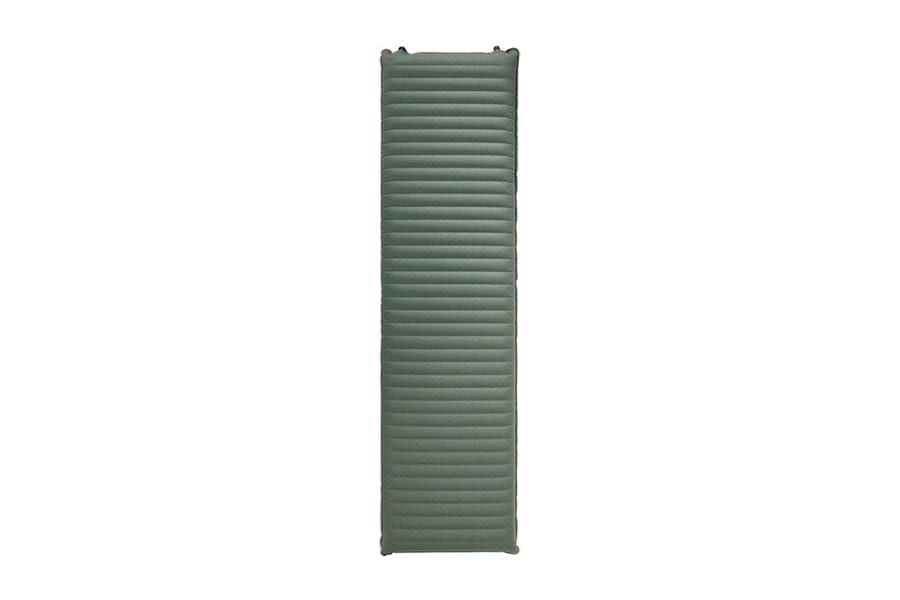
- R-Value : 3.7
- Type : Air
- Weight : 1.4lbs / 652g
The Therm-a-Rest NeoAir Topo Luxe is a newly developed sleeping pad. Its goal is to take care of the common complaints campers have with their sleeping pads. It is an air-type pad with a pump sack included so that deflation and inflation run quickly.
This is the thickest Therm-a-Rest have made with 4” of loft solidly above the ground. On the contrary, the Therm-a-Rest NeoAir XTherm MAX is the ultralight backpacking sleeping pad.
It utilizes a triangular core matrix with two stacked layers of triangles to create a stable surface. It also helps to minimize heat loss. It’s insulated but doesn’t have bulky fill materials to keep it from compressing to a small size. It uses a TwinLock valve 2-way system to allow for quick inflation or deflation.
The R-value of 3.7 makes the Therm-a-Rest NeoAir Topo Luxe sleeping pad a good choice for cool weather camping.
What we like
- Included pump sack for quick inflation and deflation.
- High loft to give extra cushion away from ground level.
- Dual-valve system for inflation without confusion.
What we don't like
- Heavy weight for backpackers.
NEMO Equipment Tensor
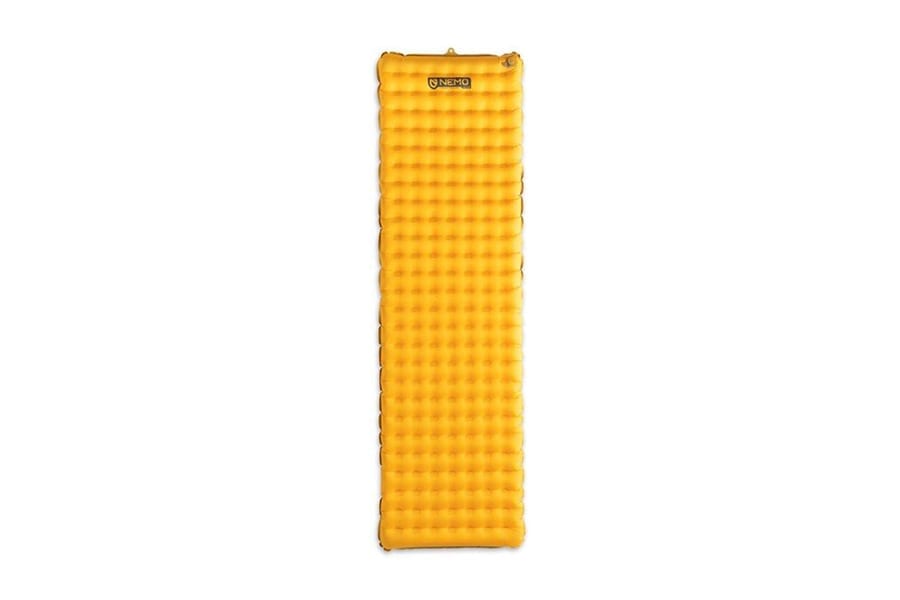
- R-Value : 3.5
- Type : Air
- Weight : 15.0oz / 425g
This sleeping pad from NEMO Equipment uses Spaceframe baffles for a stable sleeping surface. It functions to evenly distribute weight so that heavy compression points don’t dig into the ground, such as the hips and the elbows.
NEMO uses several layers of Thermal Mirror, which is suspended metalized film. It provides increased insulation in weather down to 10°F. The fabric of the sleeping pad is made from premium 20D material.
To deflate the NEMO Tensor easily, use the Laylow zero-profile valve, which is micro-adjustable. The pump sack is included and lightweight. That way, inflation is easy, and with a pump sack made with material offcuts, it is similar to the material you will already be carrying.
What we like
- Spaceframe build allows for weight distribution.
- Metalized film keeps heat around you.
- Included pump sack for quick inflation.
What we don't like
- Pump sack adds more weight to overall package.
Big Agnes Q-Core SLX
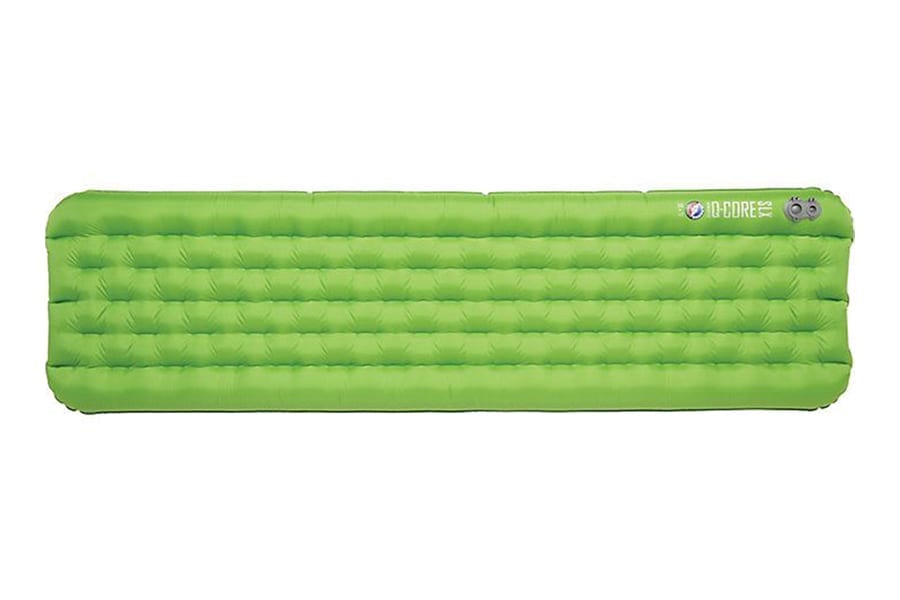
- R-Value : 3.2
- Type : Self-inflating
- Weight : 1.4lbs / 624g
Big Agnes has crafted their Q-Core SLX insulated sleeping pad for three-season camping. Heat reflective film covers silver insulation to keep a convection system dynamic throughout the night by trapping and transmitting the heat.
Big Agnes treats all included fabrics with antimicrobial treatments. This treatment prevents the growth of damaging microorganisms. The offset I-beam construction helps to reduce the weight but still provides a stable sleeping surface.
Quilted material makes up the top and makes you feel as though it is cushioned. There is also a 3M patch kit included to repair any leaks and tears while camping. To deflate or inflate quickly, use the Big Agnes Q-Core SLX’s high-volume valve.
What we like
- Silver insulation creates a heat-dynamic system.
- Antimicrobial treatments increase the pad’s longevity.
- 3M repair patches included covering for emergencies.
What we don't like
- Some deflation issues after short-term usage.
Exped DownMat XP 9
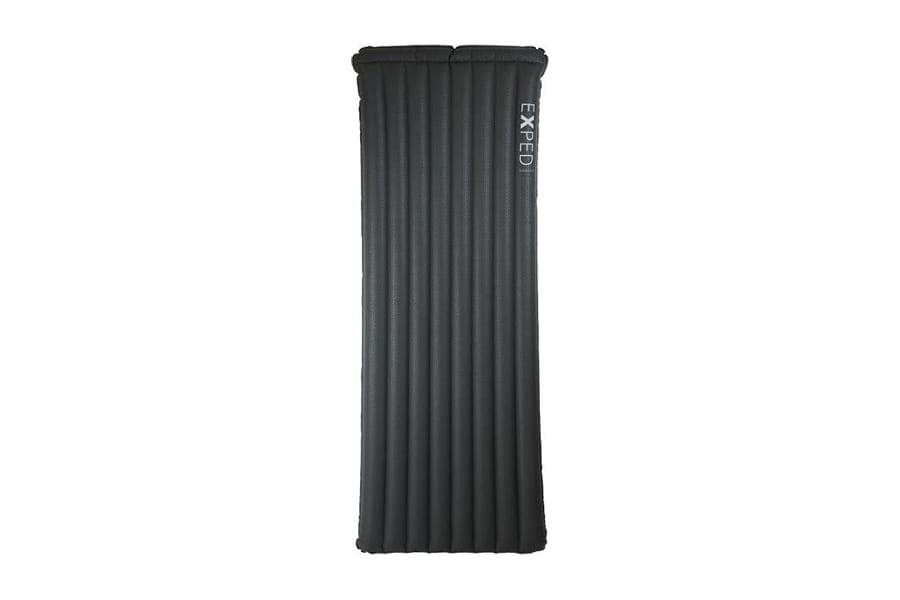
- R-Value : 7.8
- Type : Air
- Weight : 1.9lbs / 884g
If you are looking for a deep cold sleeping pad that keeps you cozy warm away from the ground, then the Exped DownMat XP 9 is a solid consideration. It has a high R-value. Part of this comes from the 700-fill-power goose down that makes up the sleeping pad’s insulation.
The exterior fabric is an abrasion-resistant polyester with UV resistance. It is a non-slip material and is durable against hard surfaces. The high-frequency welded seams are airtight to decrease the chance of the pad deflating.
The Exped DownMat XP 9 sleeping pad uses internal lamination technology to increase the durability and the airtight qualities of the sleeping pad. It needs to be inflated with the included Exped Schnozzel Pumpbag and is also a waterproof compression bag. It comes with a repair kit.
What we like
- High R-value for deep winter camping.
- Exterior fabric is polyester and abrasion-resistant.
- Included pump bag and repair kit for increased convenience.
What we don't like
- Customer service doesn’t always meet expectations.
Exped MegaMat Duo 10
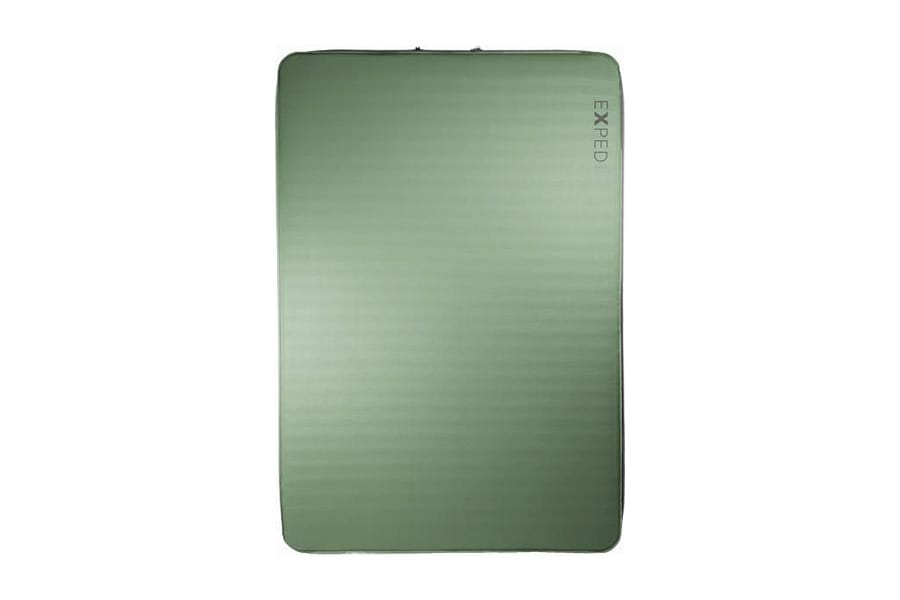
- R-Value : 8.1
- Type : Self-inflating
- Weight : 9.9lbs / 4.1kg
The Exped MegaMat Duo 10 sleeping pad is made with laminated polyester fabric to create a highly durable exterior with airtight seals. The finish is non-slip and creates a humidity resistance to keep you on the sleeping pad overnight.
This sleeping pad is insulated with high-grade open-cell polyurethane foam. It offers increased insulation, and the air channels are horizontal and cored through with the foam. To inflate and deflate easily, use the low-profile Flat Valves. It self-inflates, but there is a minipump included to make it even easier when desired.
High-frequency technology stops deflation through the welded seams. The Smart Pack sack that comes with the Exped MegaMat Duo 10 sleeping pad is height-adjustable and features a roll-top and a carry strap.
A high R-value with this pad is useful even in extremely cold situations.
What we like
- Includes a mini pump and sack to make carrying easy.
- Low-profile valves for quick inflation and deflation.
- Polyester surface fabric is durable and increases longevity.
What we don't like
- Heavier weight makes it difficult for backpackers to include in their gear.
Hest Sleep System
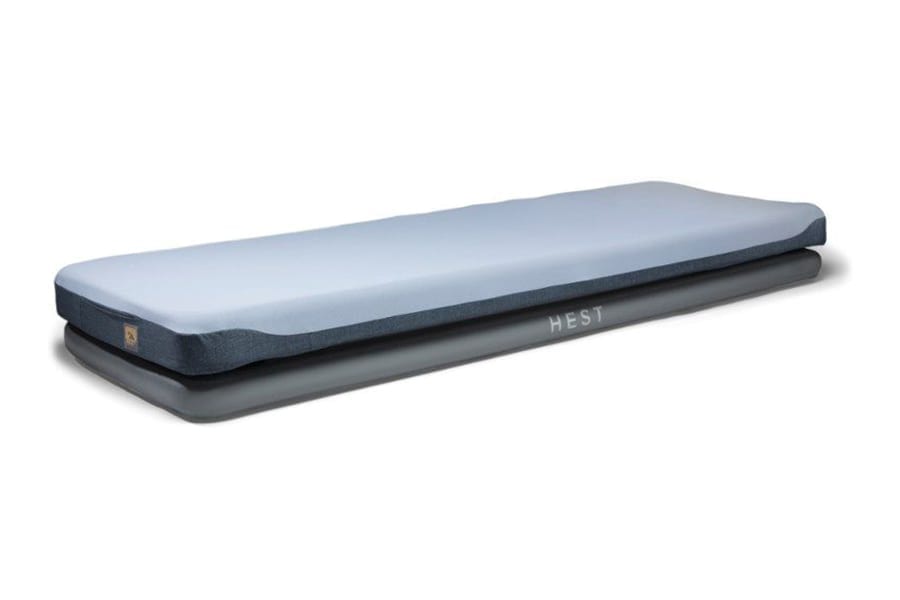
- R-Value : 11.8
- Type : Air
- Weight : 26.0lbs / 11.8kg
The Hest Sleep System is constructed with two layers of foam. This foam is the same as the polyfoams found in popular home mattresses. An inflatable sleeping pad base is waterproof, durable, and made with a drop-stitch pattern.
Engineering on the top layer of this sleeping pad equips it with an open-cell foam that shapes to the sleeper’s body and cradles pressure points; something a side sleeper would appreciate. This design aids in body alignment and creates a solid platform. A drop-stitch pattern aids in deflation and compression, allowing you to roll the mat up for storage.
A moisture-wicking nylon twill makes up the top of the Hest Sleep System. The bottom of the cover is made with polyurethane-coated nylon. Zip off the cover to wash it easily after each use. The mattress even includes pockets on both ends to allow for the storage of small items.
What we like
- Dual foam layers increase comfort and R-value.
- Drop-stitch pattern increases durability and compression value.
- Zip-off cover makes it easy to clean.
What we don't like
- Very heavy makes it more of an air mattress than a sleeping mat.
Camping Sleeping Pads Buying Guide
Buying a sleeping pad isn’t just about augmenting your sleep system’s temperature, but creating a system of comfort. It should increase the value of your sleep so that each night leaves you feeling refreshed.
How does a single pad of fabric achieve this?
Here are 6 things to think through before you buy a sleeping pad.
Types of sleeping pads
First, figure out which type of sleeping pad best fits your needs as a camper. Each one inflates differently and uses different insulating materials.
- Air pads inflate by using an air pump or by the camper blowing them up themselves. They often come with their pumps, but these do increase ounce weights. The insulation is typically a thinner lining on the inside. Therm-a-Rest’s NeoAir Topo Luxe offers a moderate weight example of an air pad.
- Self-inflating pads inflate as soon as the right valve is opened. If you want the inflation to occur quicker, you might need to blow or use a micropump. These can have interior linings of extra material for increased insulation. The REI Co-op Trailbreak is a good example of a self-inflating pad.
- Foam pads are inherently equipped with insulation. The pads are often heavier and have a higher R-value. They do not compress down as much, but they are worth it for those interested in 4-season camping. The Nemo Switchback is a lighter-weight example of a foam pad.
Usage type
The give and take over comfort, insulation, weight, and size are mostly determined by the future usage of the pad. A car camper can use something very different than a lightweight backpacker.
- Backpacking offers a variety of preferences. If you are a minimalist backpacker, you need a lightweight pad that doesn’t take up much space. The acceptable range of R-values is wide. Choose based upon the seasons you intend to use the sleeping pad the most. Consider air pads or light self-inflating pads, like the NEMO Tensor.
- Car camping gives you the widest field of options since you don’t have to worry about the compressed size and weight of the sleeping pad. You can find a pad that offers more cushioning, and the R-value mostly depends on your seasonal needs. It is easy for car campers to use a robust pad, like the Hest Sleep System.
- Winter camping primarily requires a high R-value. A well-insulated sleeping pad is the most important, such as the Exped MegaMat Duo 10.
- Thru-hiking means a lot of nights on the trail in a variety of climatic conditions. It is best to use a closed-cell foam pad since these tend to be lightweight but also durable. You don’t want the pad sinking to the ground on you after three nights, and the Nemo Switchback gives you just that stability.
R-Value
The R-value is the number associated with the amount of insulation that the sleeping pad provides. The higher the R-value, the colder the temperature that the sleeping pad keeps you comfortable in. It often goes hand in hand with increased weight, unfortunately.
Take the NEMO Tensor, for example, with its R-value of 3.5, slightly below average, and low weight of 15oz. On the other side of the spectrum, the Hest Sleep System has an R-value of 11.8 and weighs a whopping 26lbs.
The average sleeping pad that works well in cool weather has an approximate R-Value of 5. Anything below that starts to be ineffective at insulation, yet still effective at increasing the comfort of the sleep system.
Read More : Sleeping Pad R-Value Explained
Length and width
Most companies have accepted that people come in all sorts of shapes and sizes. That means they offer at least two lengths for each of their sleeping pads, often a Regular and a Long. However, sometimes they offer more, up to four different sizes for maximum comfort.
The length of a regular sleeping pad is generally 72” long.
Longs extend to 78” to accommodate taller people. The standard width of a sleeping pad is 20”, although, for those who move around a lot or otherwise require a wider sleeping pad, you can find them in 25” or 30”.
Consider the capacity of your tent when looking into these options.
Weight
The weight of the sleeping pad is essential to most backpackers. A bigger pad or one with a higher R-value often also has a higher weight.
Avoid this by looking for sleeping pads with a middle-of-the-road value.
Patch Kit
When it comes to camping gear, the most common addition to the purchase is a compression bag or stuff sack. Although some of these sleeping pads come with straps, the REI Co-op Trailblazer, it is not as common of addition as a repair kit.
Patch kits should come with some type of patch and a system to repair it on the trail. The Big Agnes Q-Core SLX offers repair patches manufactured by 3M for an easy fix if the self-inflating pad starts to leak.
The addition of a patch kit to your sleeping pad purchase is essential for thru-hikers more than most. If a sleeping pad doesn’t stay inflated, it is useless and equals out to many sleepless nights on the trail.
FAQ
What is the main difference between men and women versions?
Women tend to feel colder than most men. Although it typically doesn’t make much of a difference, women’s sleeping pads do offer increased insulation in certain areas.
They are made to target areas where heat escapes the body and keeps the higher temperature around it. This added insulation sometimes means they are slightly heavier than the man’s version.
How do I repair my sleeping pad during camping?
Use a repair kit. They might come with the sleeping pad, or you will need to buy one yourself. Find the area by using a little water and looking for tiny bubbles.
Clean the area, so the dirt doesn’t loosen the grip of the patch. Dry it and then apply the patch. Give the adhesive plenty of time to cure so that it sticks.
Amanda Williams
Amanda Williams is a writer, plant-nerd, and outdoor enthusiast. She has traveled extensively, around the U.S., throughout Asia, Europe, and Latin America. Everywhere she treks, she takes time to enjoy the outdoors. John Muir is her hero. She aspires to inspire people to live better as he did.
